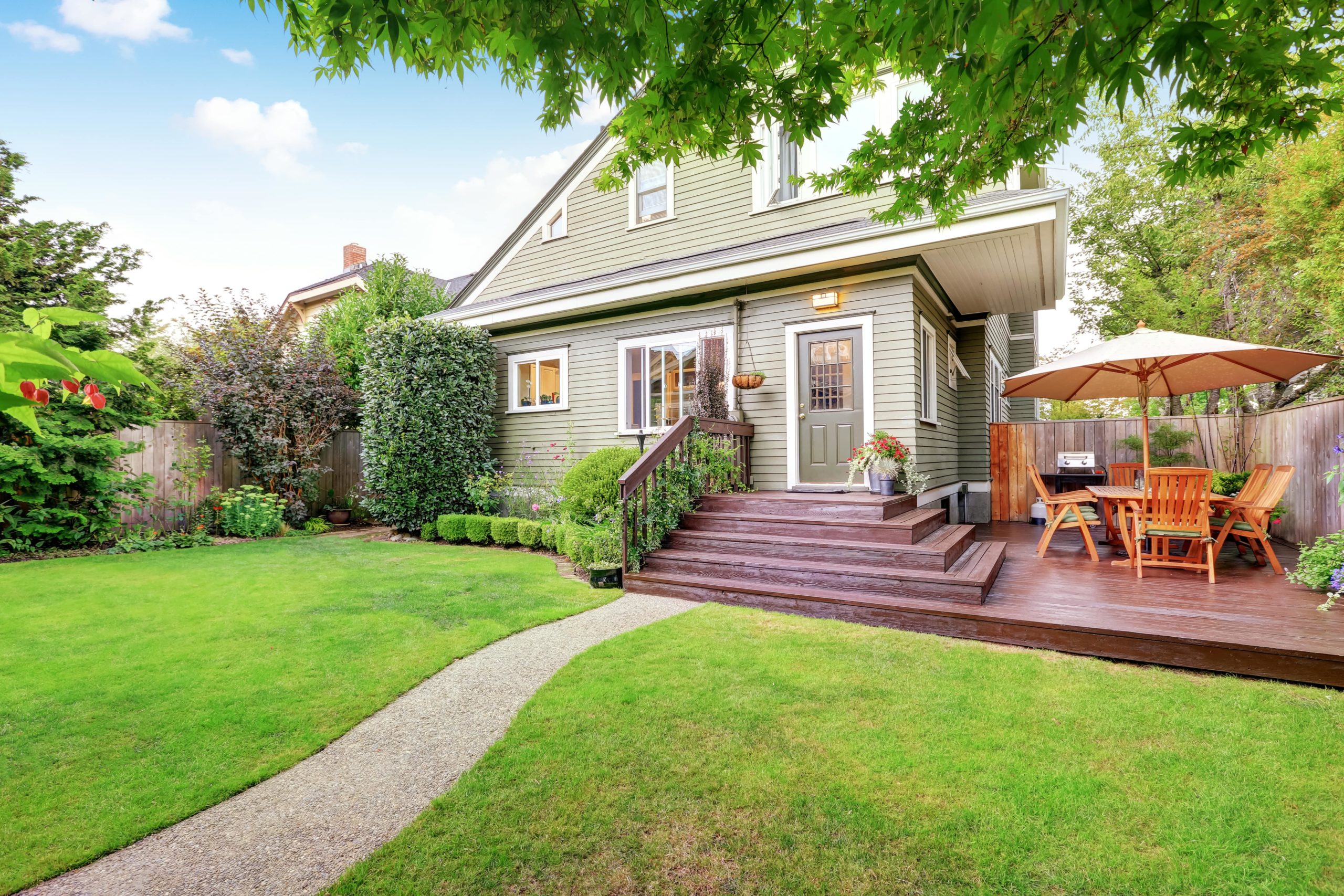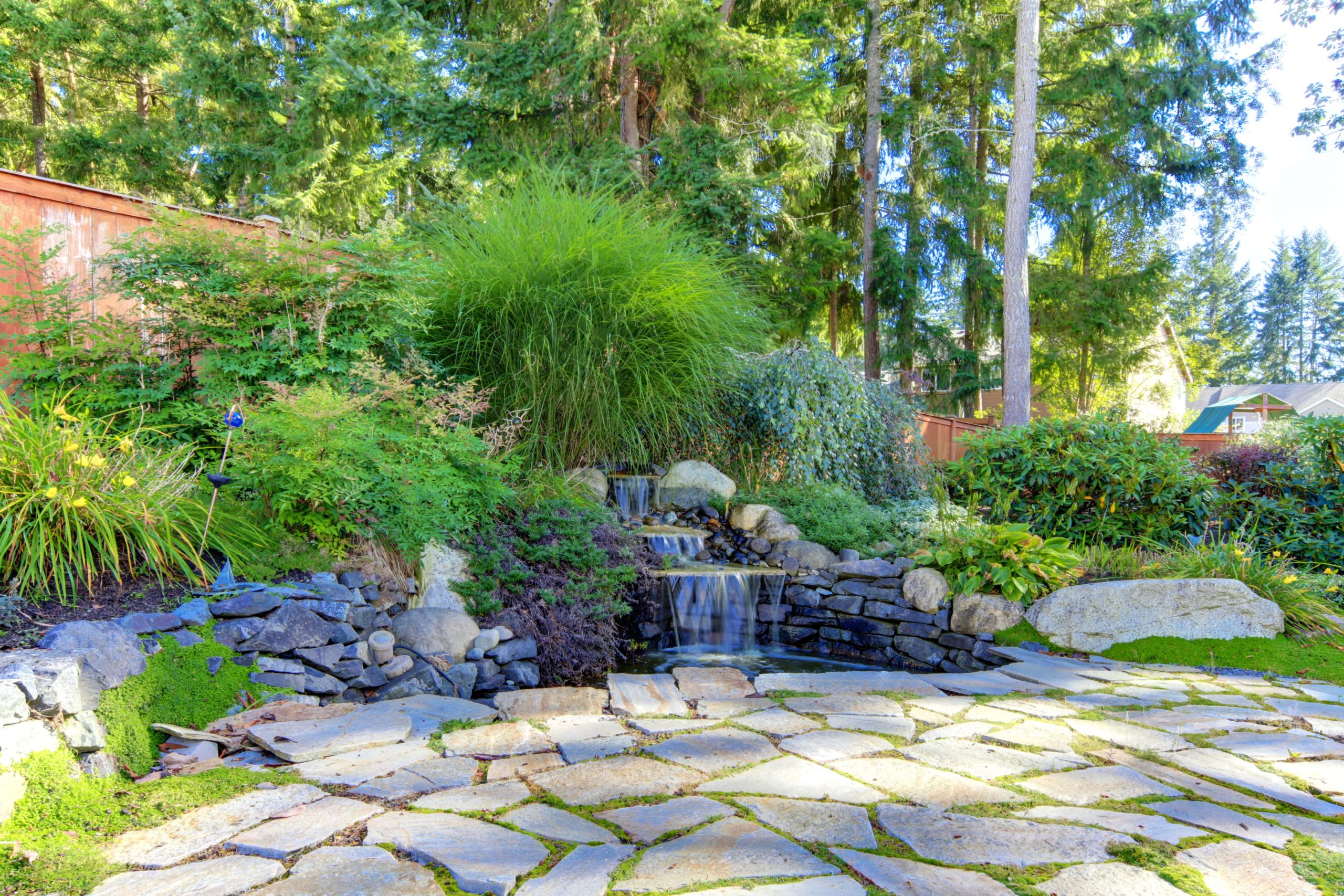Spruce Up Your Site: How to Plan a Residential Landscape Design

You should be able to enjoy your home, both indoors and outdoors. Taking the time to plan your landscape can benefit your home and its value in various ways.
Whether you’re starting from scratch or looking to improve what’s already there, continue reading this blog to find out everything you need to know about planning a residential landscape design.
Benefits of Planning Your Garden & Landscape
Before diving into the steps and rules of planning your landscape, let’s talk about why you should consider doing it first.
Aesthetic Value
One of the best things about being a homeowner is that you can create a place you can enjoy every day, no matter the season. Planning a residential landscape design allows you to focus on the elements of your property that you love.
Having an aesthetically pleasing design doesn’t not only increase the quality of your and your family’s lives, but it can also enhance the beauty of your house.
Economic Value
Believe it or not, putting time and money into landscape design plans can be a great investment. The result of good and thoughtful landscaping can increase the value of your home and property by up to 15%.
Whether it’s a traditional landscape design, or something a little more creative, by complementing your home’s best features you can boost your overall curb appeal.
Environmental Value
There’s also a way your landscape design can positively impact the environment surrounding your house.
Thoughtful landscape design plans can give you the ability to regulate temperatures in the summer and winter seasons, reduce strong winds, use water more efficiently, and even include plants that work to clean the air of dust and pollutants.
They may not seem huge, but details like the ones above can go a long way in making your home and property a more eco-friendly place.
Functional Value
Finally, your landscape design can also offer some functional value to your property. You can create an area that’s useful for you and your family year-round.
Whether it’s adding a shaded area, clearing a play area for the kids, or making a small private patio space to enjoy, there are certain techniques you can use to make your home more appealing to everyone who lives there.
In addition, strategically planning your garden and landscape design can help you avoid future problems and cut back on yard maintenance.

5 Elements of Landscape Design
In many ways, designing the exterior of your home is similar to designing its interior. In this section, we’ll review the 5 elements of landscape design to help you get a better understanding of how your design process should unfold.
1. Line
When it comes to residential landscape designs, incorporating lines is important to control movement. For example, using lines in walkways, tree lines, or flower beds can add visual interest to your design.
These lines can be a variety of shapes ranging from straight and horizontal to curved and diagonal. You can also use lines to emphasize your landscape’s aesthetic. More formal landscape design plans will most likely involve clear, straight lines while an informal design will take advantage of the curved shapes using hardscape features like pavers or natural stone.
2. Form
Not to be confused with lines, form refers to the shapes of your plants or hardscape features. In terms of plants, you’ll find some that are upright, groundcover, round, or freeform. When looking at hardscape features, you can choose structures with various heights and shapes. For example, if you were to add a stone pathway, garden fountain, or pergola.
To create a balanced residential landscape design you want your form to be consistent with your aesthetic. A formal landscape may have carefully trimmed shrubs while an informal design will embrace the natural shape of plants and trees.
3. Texture
Another important element of landscape design is texture. This element refers to both soft and hardscapes, meaning the use of plants and design features that are either hard or soft, fine or coarse, heavy or light, and rough or smooth.
As we mentioned before, you want your landscape to feel balanced, and to achieve that you’ll have to introduce a mixture of textures. Doing this will add layers of dimension to your design, making it more visually appealing.
4. Color
The colors your landscape presents will be one of the first things that catch your eye. That’s why it’s important to think about your surrounding environment and how it’s affected by the four seasons.
It’s easy to focus on the vibrant colors your yard will show off in the spring and summer months, but you want to be able to enjoy it in the colder months as well. Choosing plants and trees that will continue to offer color throughout the winter season is imperative. We recommend planting evergreens, conifers, or holly species.
In addition, the colors of your hardscape materials can play a key role in your landscape’s aesthetic. For example, are you interested in using bright colors that stand out, or more natural hues that will blend into the vegetation around your home?
5. Scale
The last element of landscape design you should know about is scale. The heights and widths of your plants and design features are what work to establish your landscape’s scale. The scale is what enhances the design’s overall composition.
It’s important that the scale of your soft and hardscape additions don’t only complement each other, but also the size of your home, property, and any existing features.

How to Plan a Landscape Design
It’s finally time to start creating your dream landscape. When learning how to plan a residential landscape design, it’s important to consider each step carefully.
Doing this will ensure the process runs smoothly and the result is everything you dreamed it would be. If you’re not sure where to start, try following the steps below.
Analyze Your Yard
The first thing you need to do when learning how to plan a landscape design is to analyze your current property. Below, we’ve listed a few steps you should take as you evaluate your site.
- Identify the boundaries. Measure the dimensions of your house as well as the location of the house within your property lines.
- Locate the position of utilities. Pinpoint the location of any above-ground power lines, as well as underground gas lines or water and sewer pipes. This will help you avoid any malfunctions during the design process.
- Think about the view. This refers to views on or off your property, for example, you want people on the street to find your landscape appealing, but you also want to be able to enjoy it from wherever you are on your property.
Determine Your Needs
As we mentioned in the first section, one of the benefits of planning your garden and landscape is its functionality. To get the most out of your landscape design, you need to determine what your needs are and how they can be met.
Traditionally, there are 3 major areas in a residential landscape design: a public, private, and service area.
- Public area. This is the part of your landscape that people will see from the street or areas surrounding your property. Typically the public area consists of your front yard and side yards if you have them.
- Private area. The private area is where you can spend time in peace, knowing that you’re in the privacy of your home. It will also be the area you use when entertaining guests. Therefore, the focus here should be on relaxation and recreation.
- Service area. For your landscape to be fully functional you’ll need a service area. This space doesn’t have to be large, but we recommend it’s closest to the kitchen or other back doors. Here is where you may keep a grill, your trashcans, or other equipment you may need.
Choose Your Plants
Once you have the layout of your landscape settled, you can begin to choose how you want to fill in the empty space. This is the step where you will research what types of plants, flowers, and trees you want to incorporate into your design.
You’ll find that certain plants can be arranged in certain ways to enhance your layout. Below, we’ve broken down the 7 basic ways you can do this in your yard.
- Specimen plant. These plants are meant to be the centerpiece or focal point of your landscape. However, since these will most likely be in a prominent location, you’ll want to use them sparingly so you don’t overwhelm the other elements in the yard.
- Accent plant. Think of accent plants as the featured pieces within a group of plants or flowers. These are meant to catch the attention of viewers but are still more subtle than a specimen plant.
- Corner plant. Blending the vertical and horizontal lines, corner plants are known to “tie down” the corners of your house or landscape. These are often smaller groupings of plants that work to balance your design.
- Foundation plant. Similar to corner plants, foundation plants are meant to anchor your house to the ground. These will typically be taller plants placed on, or beyond the corners with their heights descending towards the entrances. Keep in mind, these plants are meant to guide your eye toward the entrances, not block the infrastructure of your home.
- Entrance plant. These plants are solely used at the entrances of driveways, pathways, or your front door. They act as an invitation for guests into your home and yard and are usually placed in planters or other containers.
- Border plant. Exactly what they sound like, border plants are meant to act as a boundary or line between areas of your landscape. These will allow you to clearly distinguish where one space ends and another begins, like the yard and driveway.
- Screen plant. Lastly, screen plants are primarily used to block or camouflage unwanted views and objects. We recommend using evergreen species for some of these because they will offer coverage year-round.
If you want to ensure your vegetation flourishes, you’ll want to keep a few things in mind. As you research types of plants, make sure you look into the following factors.
- Light requirement
- Moisture requirement
- Soil drainage
- Soil pH requirement
- Pest susceptibility
- Growth and mature size

With the right tools and thorough research, every homeowner can plan and create the landscape of their dreams. However, it can’t hurt to ask for help from time to time.
If you ever feel stuck during the process, check in with your local Home and Garden Center to see what kind of guidance they can offer.
Ready to start planning your landscape design? Browse our Home and Garden departments to find everything you need.
This blog was originally published on March 14, 2019, and updated on February 1, 2023.
